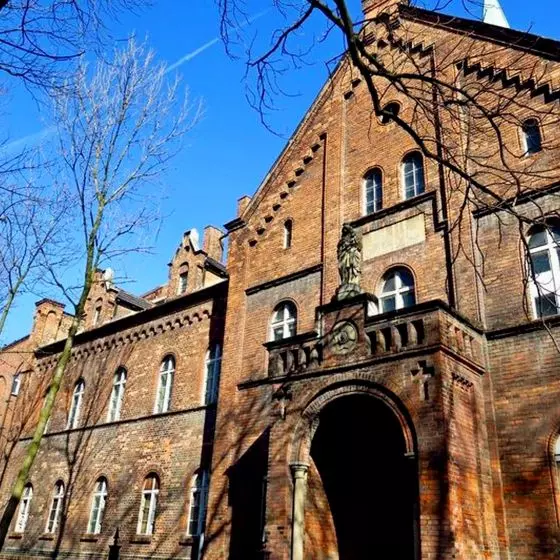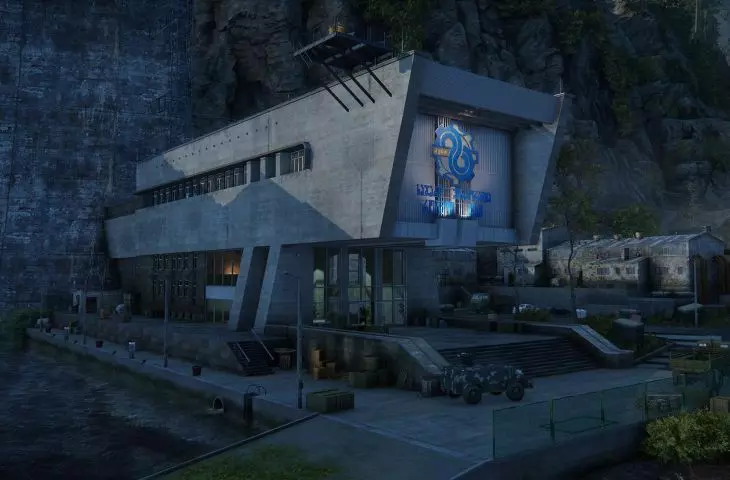Blazej: What about Assassin's Creed where the Notre Dame Cathedral in Paris was perfectly recreated? Doesn't that game contradict what you're saying?
Thomas: No, it doesn't contradict it. The anecdote about Notre Dame that you mention says that after the cathedral fire, all the planning came from Ubisoft, which took a perfect inventory when creating Assassin's Creed. This game takes place at different points in history, in different locations. Assassin's Creed: Unity takes place during the French Revolution. In creating a game like this, the goal is not to accurately represent Paris from the second half of the 18th century, but only to create an "impression" of it. Notre Dame Cathedral is one of the so-called POIs - Points (Places)
of Interest. These are objects that are distinctive and recognizable enough that the viewer will pay attention to them. In the case of Paris, that would be Notre Dame.



Assassin's Creed - Notre Dame Cathedral in Paris
© Ubisoft Montréal
Blazej: Do we see the 18th century form of the cathedral in the game, before the later restoration work?
Thomas: Knowing Ubisoft's professionalism, I think so. When this company made a game set in ancient Egypt, it constantly consulted with archaeologists. In the episodes that take place in ancient Greece, the statues and buildings are painted according to historical truth. But let's go back to Notre Dame. We create a cathedral to set the game in reality, but the most important things for gameplay do not happen in Notre Dame itself, but in its surroundings. We see the cathedral in cutscenes, when we take control away from the player and reduce him to a spectator. While he can enter the temple, climb to the top of the tower, move around the interior, it is not a place that is interesting in terms of gameplay. The most interesting things happen elsewhere. There are just too many limitations with ready-made spaces, ready-made buildings.
Blazej: So again we have a parallel between the world of games and architecture - the problem of adapting an object to a new function, which in this case is playability?
Thomas: Yes. Playability will be limited by the existing form, the framework of the architecture. I worked on the game Enemy Front, which was set during the Warsaw Uprising. One of the missions concerned the defense of the Holy Cross Church on Krakowskie Przedmieście. We wanted to recreate a part of Warsaw and a specific historical moment. This imposed many limitations. We had to design the mission so as to adapt it to the given context. The result was not very good...



Enemy Front - St. Cross Church on Krakowskie Przedmieście in Warsaw.
© CI Games
Blazej: Let's stay with the POIs. How are they selected? Each of us pays attention to slightly different points in space.
Tomasz: In a way, yes, but if we were to think about Piotrkowska Street in Lodz - would every tenement be distinctive? We have a tenement under Gutenberg (Piotrkowska 86) and it makes the others, which are not so distinctive, seem less important. In New York, we have Times Square, but we have no idea what is a few dozen meters away [laughs]. Perception, not reality! Games are really no different from creating scenery in the theater.
Blazej: To what extent does the unique, unrepeatable form of individual objects pose difficulties when working on a game environment?
Thomas: You can make unique buildings using repetitive elements. We create a kind of abecadal, limited number of modules, which we put together in such a way as to avoid the impression of repetitiveness. The challenge is to find a balance between as few unique elements as possible and at the same time as many combinations as possible.
Blazej: These are no longer the days of Prince of Persia....
Thomas: These are the times of Prince of Persia, among others!
Blazej: What do you mean, there everything was repetitive....
Tomasz: Modular design in games did not come from an analysis of the essence of creating architecture, but from the limited capabilities of the hardware. It started with games like Prince of Persia, where graphic designers developed distinctive little eight-bit bricks, repeated many times. The key question they asked themselves was: how many differenttiles do I need to have in order to create as diverse an environment as possible using them. "Prefabrication" in games did not start now. It existed from the very beginning because of, among other things, the limited memory capacity of gaming hardware. Before Prince of Persia, there was Mario Bros. That game was laid out on checkered sheets of paper. It was not designed in a computer, but on millimeter paper. All of Mario was designed that way! [Laughs]
Blazej: Tell us about the differences between real architecture and architecture in games. Could the room we're in now be part of a video game environment?
Thomas: There are many things in game design that come with experience. If I design two rooms next to each other, I know that I should not design a thin wall between them. In that case, the buffer between the two, often very different spaces, is too small, and the perception of changing volumes is immediate, and things that happen suddenly are unpleasant to perceive. I have to take into account the thickness of the walls, the size of the portal, the duration of the transition from one space to another. All this affects perception. Portals in games, passages, doors are a very interesting and extremely important topic. In the virtual world, all real dimensions lose their meaning. We cannot replicate a standard doorway. A portal with a width of less than 120 centimeters makes no sense at all.
Blazej: Why?
Thomas: Because you can see more in games. The field of view, field of vision (FOV) in games is about 100 degrees. On PC, if the game allows it, it is 100-110 degrees. On consoles - 70-80. You need to adjust the dimensions of doors, windows and entire rooms, in such a way as to preserve our perception from the real world. It would make no sense to recreate such a room as we are talking in [the room is about 30 square meters - note B.C.], in a game like Doom. Everything would be right in front of the player's eyes. In Sniper, the double doors were 3 meters wide, just to be perceived as normal.
Blazej: It seems to me that while it is difficult to translate certain aspects of the gaming environment directly into the world of architecture, the common ground would be the emotional impact seen in museum buildings or monumental assumptions, among others.
Thomas: In London, a former prison converted into a museum has recreated the prisoners' journey to the scaffold. Visitors move from wide corridors to narrower and narrower ones. From normal portals - to smaller, lower ones. We do the same in the games. The Warsaw Uprising Museum with its small section of canal is an example of game design thinking in architecture.
Blazej: So the architecture came first?
Tomasz: Yes. The games are only fifty years old. But these are not effects reserved for architecture.
Blazej: Let's look at procedurality in games. How does it affect the design process?
Thomas: In recent years, video games have grown unimaginably. It's no longer two hours of fun, but two hundred hours and hundreds of square kilometers of virtual world. We can't fill such huge spaces by hand. We need to develop rules by which the game environment is created. These rules can be very simple - here a forest, here a desert, here a land of winter. We press a button and the software generates us an environment according to the set rules. A complicated example would be the Spider-Man game, in which the entire New York City was created through appropriate algorithms. The designer drew floor plans, building outlines, determined the type of building, and then the software did the rest of the work and the whole building was created. The graphic designer and designer were needed to create small modular elements from which the individual buildings were created. After that, everything happened somewhat on its own.
Blazej: Can you imagine a developer using such tools? We have data: the local zoning plan, the budget. We enter them into the computer, press enter and create a settlement?
Thomas: That wouldn't work in a game. We can create a single building this way, possibly a set of them, but not an entire city, because gameplay is key, though. In real life, however, there is no gameplay. I'm surprised that architectural offices and developers don't use such methods to optimize design! [Laughs]
Blazej: Jula Arent told [see interview with Jula Arendt] that she didn't play video games much, while she loved to watch other players in action. To what extent does the player's perspective change the designer's approach to the matter being created?
Thomas: It's hard to say. I've always played games. I've always wanted to make them. Now I both play and design [laughs]. I try to create a space that would impress me as a gamer. From my perspective, being a gamer makes it easier to work.
Blazej: An architect usually creates for someone - an investor, a patron. When designing video games, do you think about future audiences, other gamers? Neutra said he couldn't design an enclosure for a white bear without first learning about its needs, its preferences.
Thomas: That works for video games, too. But I happen to be a white bear turned architect!
Blazej: Thank you for the interview.
discussed: Błażej Ciarkowski
Illustrations provided courtesy of Tomasz Andrzejewski.



























